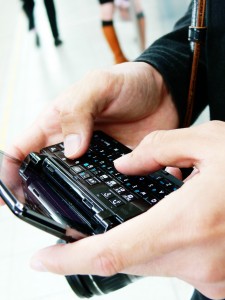Lately, we have been looking at a lot of banking apps and front ends for the iPhone, Android and other mobile devices in the lab. Our testing thus far has shown some great results and it seems like a lot of banks, credit unions and other financial institutions are interested in having an “app” for their customers and members. Many of these apps are well designed, deep and rich. Many are simply canned front ends to existing web page content and functionality. A few are just plain horrible.
Here are three tips for organizations to keep in mind when coding their banking and financial apps for the mobile devices.
1. The mobile devices are not PCs. The apps should be light weight, clean and easy to use. Usability is tied to security in this case, because of errors. If your app has tiny little buttons with confusing text, no confirmation dialogs and lacks other basic usability features then you make it easier for users to make mistakes, create bad transactions, get confused and other issues would could constitute a risk for your business and your users. Don’t design for a PC monitor. Make sure your designs are usable on the appropriate size screens and with appropriate space for human digits.
2. Don’t allow users to store their credentials in the app or its underlying data structures. Many mobile phones and such remain woefully unsecured. Even where the vendor has provided for basic security controls for the devices, many users do not use them. Plan ahead for this. The app has to be convenient, but it shouldn’t let the users place undo risk on themselves. If you allow them to store logins, or even a digital certificate, make sure they can’t also store at least 1-2 other pieces of credentials between uses. If someone just picks up their device, they should NOT have access to the users accounts.
3. This goes without saying, but don’t forget encryption. Just because an application uses the cell network, does not mean that you don’t need SSL. (I’m looking at you two developer groups in the last 90 days, you know who you are.) No matter the network, protect your transactions and data streams with strong crypto. The mobile devices can handle it. They can do enough lifting to handle SSL or they shouldn’t be running a banking app. Like Nike says, “Just Do It!”
There you have it. Three basic ways that you can help increase the safety and capability of your financial services app on the iPhone, iPad and other mobile platforms. If you have done these three basics, then you are off to a start. The next crucial step is to get your app and the back-end processes checked via a risk assessment and security test. Give us a call if you need assistance or want us to drop it into our testing lab process. We are seeing quite a few of these days.

